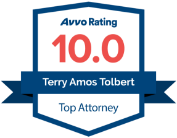Trains became a technological marvel in the 1800s, as they carried passengers and goods efficiently. While trains may not bring the same awe and wonder they did centuries ago, they are still commonly used to transport cargo across the continent. According to the Association of American Railroads, trains transport more than 400,000 carloads and intermodal containers weekly in the United States.
These massive pieces of transportation machinery require immense power to carry goods across the country. A fully-loaded freight train can move from 20 to 30 mph, and many are designed to reach up to 75 mph. The average locomotive weighs 200 tons. Due to their power and size, trains can be dangerous, especially if your vehicle comes across their path.
When these train and car accidents happen, they can cause severe damage and pose a serious threat to passengers’ health. So, how do these accidents happen, what can you do to prevent them from happening, and what should you do if you’ve been injured? Keep reading to learn more.
Need a personal injury lawyer who is experienced in automobile accident injuries? Visit the contact us page to contact the Tolbert Beadle team. They can help you when you need justice.
How Do Railroad and Vehicle Accidents Occur?
Fortunately, according to the U.S. Department of Transportation, railroad-automobile accidents have decreased since 1996 due to the Grade Crossing Action Plan. This plan made states more responsible for identifying and fixing potentially dangerous crossings.
However, these types of collisions still occur and can be devastating. While we can’t possibly predict every way this type of accident will happen, we can review a few common elements in train-automobile crashes:
Negligence
When any involved party fails to show the proper duty of care, they are liable for the injuries to the crash victims. As we will discuss later, this can fall on several parties. A few examples include:
The motor vehicle operator
If the driver of a passenger vehicle driver is unable to stop in time to account for the oncoming train, they’ve breached their duty of care to protect pedestrians, passengers, other motorists and the train crew. The negligence of other motorists can drag the most defensive and safest drivers into the carnage of these accidents.
The train crew
The train operators have a duty of care to operate the train to the best of their ability and follow locomotive operation laws. Train operators must follow strict speed limits depending on track grade, cargo, weather conditions and other factors.
Local and state agencies
If a public railroad crossing is not properly marked or indicated to drivers, the government entity residing over the crossing may have breached its duty of care to warn drivers of a potentially dangerous situation.
Stalling on the Railroad Tracks
A car stalling on the road can happen to any motorist but is more likely to occur to individuals who drive manual vehicles due to the gearshift. Regardless of what you are driving, you should avoid stopping on train tracks or shifting gears while driving over train tracks. Stop at the designated sign or signal. Keeping the train tracks clear is essential to avoid costly accidents.
Failing to Follow Railroad Crossing Safety Protocols
Unfortunately, a lack of knowledge or blatant disregard for safety rules can lead to costly accidents. There is no time-cutting maneuver worth risking your life or the lives of others. Each state has specific guidelines for drivers when crossing train tracks. Here are a few basic rules for crossing train tracks in Missouri:
- You shouldn’t cross the tracks whenever signs indicate an approaching train, a gate is lowered or the train is visible.
- You should never drive through or around a barrier when a train is approaching.
- You shouldn’t cross a railroad crossing when you don’t have sufficient clearance on the other side.
- The undercarriage of your car has to clear railroad tracks to avoid contact signals.
- If you’re driving a commercial motor vehicle, you must be able to stop before reaching the nearest railroad crossing.
Safety laws involving railroad crossings have been updated and revised to account for a variety of situations. Knowing your state’s railroad crossing laws is essential to avoid costly mistakes.
The Stopping Distance of Trains
Trains require a lot of power to move substantial cargo to their destination. Because of this, it can take trains a significant distance to stop. An average freight train can take a mile or more to stop. Depending on the time of day and visibility conditions around the crossing, a train crew may not be able to detect your presence on the tracks in time to stop completely.
Poor Weather Conditions
Weather conditions can affect a driver’s ability to operate their vehicle normally. Whenever it’s wet or icy, you must account for more distance to come to a complete stop.
If any or all of these elements are present when you are driving toward a train crossing, you may be at higher risk of getting in a motor vehicle and railroad accident. To reduce the chance of these accidents happening, check out our tips below.
What You Can Do to Prevent These Types of Accidents
You can follow these six tips to reduce your chance of a railroad and motor vehicle accident:
- Follow railroad crossing signage and slow down. Freight trains are quieter than you think. It’s essential to be aware when coming to a train crossing.
- Never try to go around a gate. Many gates and barriers use electronic signals and are timed to accommodate the train.
- Never stop on top of a railroad crossing. Avoid shifting gears while crossing to prevent stalling.
- Avoid passing someone while crossing a railroad. You should reduce your speed when coming to a railroad.
- Keep your vehicle in good driving shape. This lowers the likelihood of a malfunction or breakdown on top of a railroad crossing.
- Always account for poor weather or other road conditions when driving.
What You Should Do If You’ve Been Wrongly Injured
You can do everything in your power to avoid a collision, but you may still be wrongly injured in an accident with an oncoming train. If this happens, you should consult an experienced auto accident attorney.
The team at Tolbert Beadle has represented motor vehicle accident victims of all types and will help you get the compensation you deserve.
Don’t know where to start? You can get in touch with the team at Tolbert Beadle by starting a chat in the lower right corner, giving us a call or visiting the contact us page to give us more information about your injury. We offer a free consultation to assess your case and review your options.





